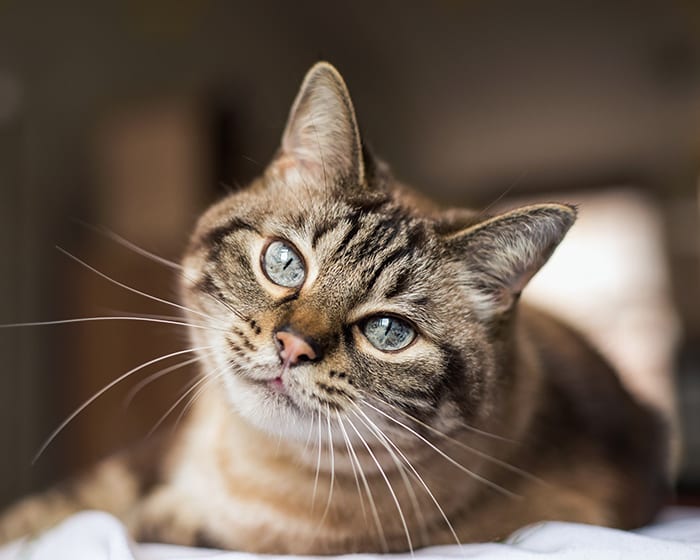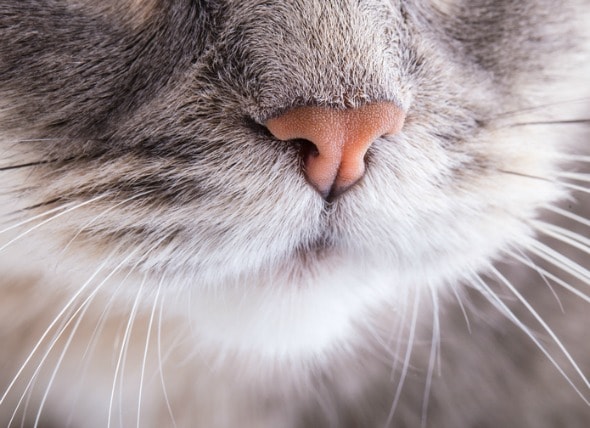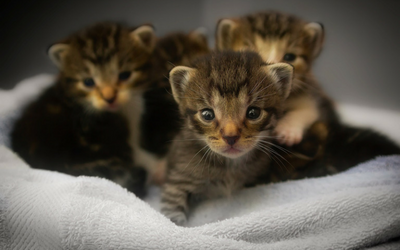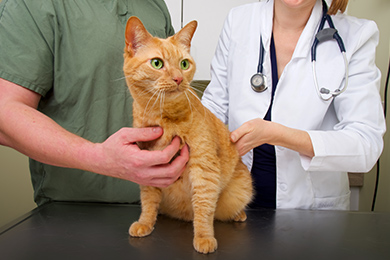chlamydia in cats uk
Signs and symptoms of feline chlamydia. At first only one eye may show signs but usually both eyes become red and inflamed.

Upper Respiratory Infection Chlamydia In Cats Petmd
Different strains of Chlamydia felis and Chlamydia pneumoniae bacteria cause significant eye infections in cats.

. Cat chlamydia while a serious threat and a potentially chronic disease is easily preventable through vaccination and cured by antibiotics and replacement fluid therapy. Chlamydiosis refers to a bacteria based chronic respiratory infection caused by the Chlamydia psittaci bacterium. Chlamydia felis does not survive outside of the host so close contact between cats is required for transmission usually via ocular discharges.
Chlamydiosis typically affects young cats under 9 months of age. Causes of Chlamydia in Cats. The Feline Centre Department of Clinical Veterinary Science University of Bristol UK.
Although cats of all ages can be infected the disease is most commonly seen in kittens or where cats are kept in groups or housed. Chlamydiosis is perhaps of most concern to dog owners and breeders. Many different viruses cause cat respiratory infections with feline calicivirus being the most common.
Chlamydia felis is a Gram-negative bacterium that is an obligate intracellular parasite of cats. Fever broncho-pneumonia peritonitis lack of appetite vomiting diarrhoea skin lesions and conjunctivitis have all been seen in. All ages of cats can be infected but disease is seenmost commonly in young kittens 5 - 12 weeks of age and cats in a community such as breeding catteries and rescuecentres.
Contagious infection with the intracellular bacterium Chlamydophila felis Chlamydophila felis. Chlamydia felis infection is fairly common in cats and causes conjunctivitis and a thick yellow discharge from their eyes. It is a bacteria that invades and infects your cats eyes and is one of the most common causes of conjunctivitis in cats.
Chlamydophila felis is a type of bacteria that causes conjunctivitis in cats and kittens. It can cause conjunctivitis or infection of the inner eyelids and sclera or whites of the eyes. Routine hygiene precautions are recommended when handling and treating.
Factsheet for cat owners full of useful information including description causes what to look out for and much more. Topical and systemic tetracyclines. With treatment the prognosis is positive.
The first manifestations of feline chlamydia consist of aqueous discharges in one or both eyes. Although there is no link between Chlamydia felis and serious problems in people there are anecdotal reports of people getting conjunctivitis from cats with chlamydial conjunctivitis therefore always wash your hands after petting a cat especially. Chlamydia felis infection is relatively common in cats it is thought to be a cause of up to 30 of cases of chronic conjunctivitis.
Chlamydia in cats is a bacterial infection that typically affects the eyes. If your cat has chlamydia its important that you. The Chlamydophila bacterium is readily transmitted from cat to cat.
In addition it may also affect the genital area although thats less common in cats. Felis can cause up to 30 percent of chronic conjunctivitis in cats. The disease in cats is also known as feline pneumonitis which can be misleading because these bacteria rarely cause pneumonia in cats.
Sometimes called Chlamydial Conjunctivitis chlamydia in cats is caused by the bacteria Chlamydia felis. There have been one or two reports of human conjunctivitis following contact with a cat harbouring C felis but the risk appears to be extremely low. Humans can be infected with Chlamydia psitacci but the bacterium that infects cats Chlamydophila felis is highly adapted to this species.
Cats that have developed this infection will often exhibit traditional signs of an upper respiratory infection such as watery eyes runny nose and sneezing. This bacteria occupy and infect the conjunctiva cells that leads to inflammation and ocular discharge. Up to 10 cash back The first clue of chlamydia in cats is usually conjunctivitis or pink eye.
Vets can usually treat the illness with eye drops or antibiotics if the infection has spread. At first it only affects one eye but within a few days it might possibly affect both eyes. In addition inflammation and redness in the cats third eyelid are often very noticeable.
Feline chlamydia is a bacteria-based disease that causes upper respiratory infection in cats. Other issues affected cats may experience include. It appears as if liquid has been poured into the cats eyeballs.
The main health implication. If your cats have some dirt on its eyes you can follow these 6 simple. Conjunctivitis very rarely respiratory complications.
Infection in dogs is not diagnosed as often as in birds and cats possibly because the symptoms can be non-specific and the cause misdiagnosed. Chlamydial conjunctivitis is an infection of the membrane around the eye the conjunctiva. This bacteria has also been reported to infect the genital tract and joints.
All information is peer reviewed. Chlamydia felis previously known as chlamydophila is an infection in cats caused by a certain type of bacteria. Detection of the organism using PCR isolation of bacterium cytology.
Feline chlamydial conjunctivitis is an infection caused by a bacterial organism called Chlamydophila felis. Known as feline chlamydia its fairly common and can affect the upper respiratory system or eyes. Heres what you should know about the symptoms diagnosis and treatment of this common eye infection in cats.
Though its contagious among other cats youll be glad to hear its not zoonotic and would be extremely rare for you to catch it. Caused by the bacterium Chlamydophila felis Feline chlamydophilosis is considered a relatively severe disease. Chlamydia in cats is one form of the feline upper respiratory disease and those with a chlamydophia infection will also have a viral upper respiratory.
As the days go by the secretions will become more viscous and take on a greenish color. Your cat can be vaccinated against chlamydophila felis on the advice of your vet. Transmission of and Risk Factors for Feline Chlamydia.
There have been suggestions of other chlamydial agents occurring in cats but there is little evidence that they are clinically relevant. As told before chlamydia in cats is caused by a bacterium called Chlamydophola felis. Cats may be infected by a strain called Chlamydia felis which as the name implies infects cats but doesnt usually bother people.
The most common signs of chlamydia in cats involve the eyes or the upper respiratory tract nose or throat and only when infection is not treated does it spread to the lungs. As many as 30 percent of feline pink eye cases are a result of chlamydia. The main chlamydial agent recognised in cats is Chlamydophila felis which was previously known as Chlamydia psittaci feline strain.

Pin By Mazef Anita On Chats Beautiful Cats Raining Cats And Dogs Pretty Cats

Chlamydophila Felis Infection Feline Chlamydophilosis International Cat Care

Upper Respiratory Infection Chlamydia In Cats Petmd

Feline Herpesvirus Fhv Infection International Cat Care

Common Cat Dog Eye Conditions Cat Dog Eye Problems

Upper Respiratory Infection Chlamydia In Cats Petmd

Upper Respiratory Infection Chlamydia In Cats Petmd

Chlamydia In Cats What It Is And What It Isn T Catster

Ew Phew The Causes Of Bad Cat Breath Vet In Toney Countryside Veterinary Hospital

Doxycycline For Cats Great Pet Care

Home Wood Green The Animals Charity Animal Charities Homeless Pets Animals

Kitten Conjunctivitis Purple Cat Vet

Chlamydial Conjunctivitis In Cats Vca Animal Hospitals

Upper Respiratory Infection Chlamydia In Cats Petmd

Chlamydia In Cats What It Is And What It Isn T Catster

Herpesvirus And Chlamydial Eye Infections In Cats Oculus Vet


